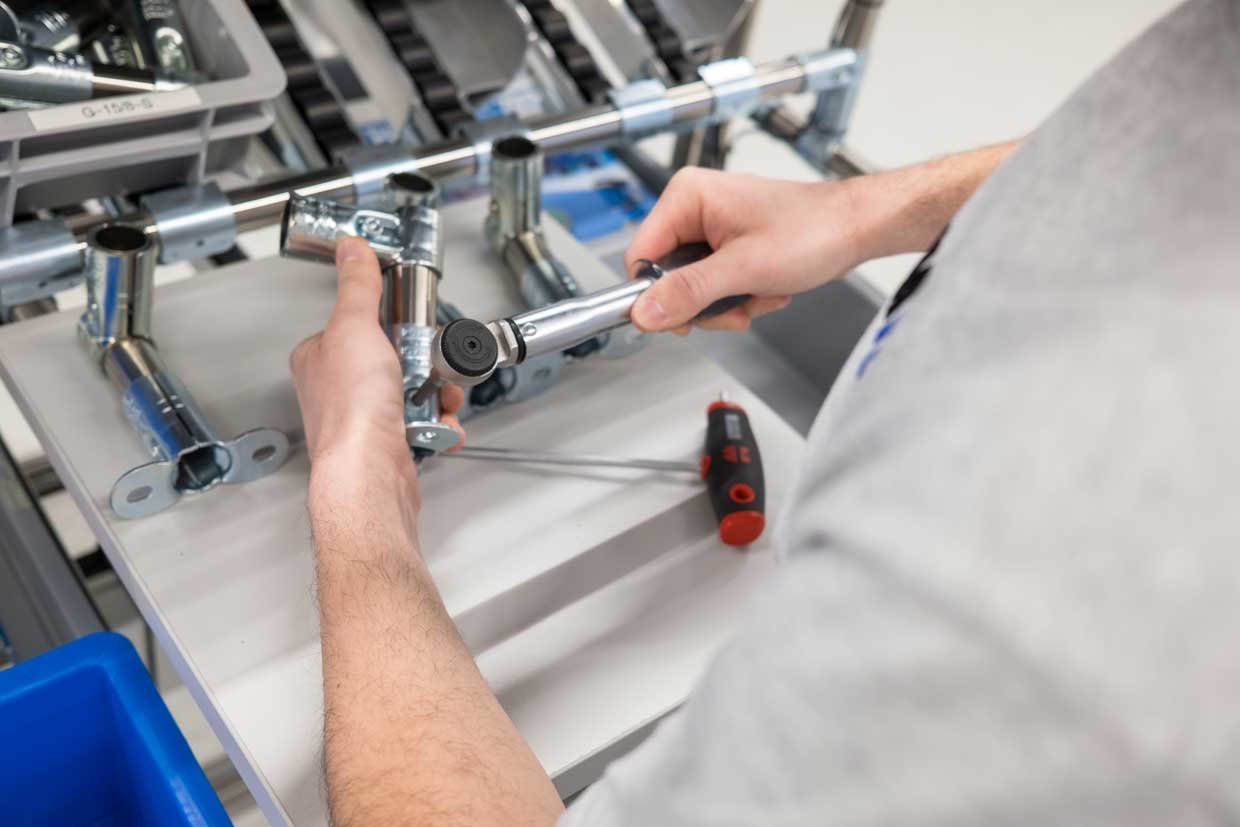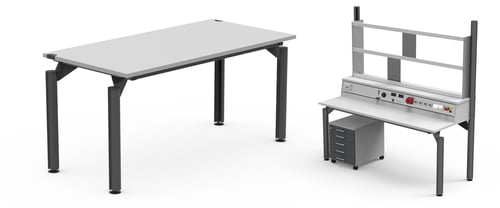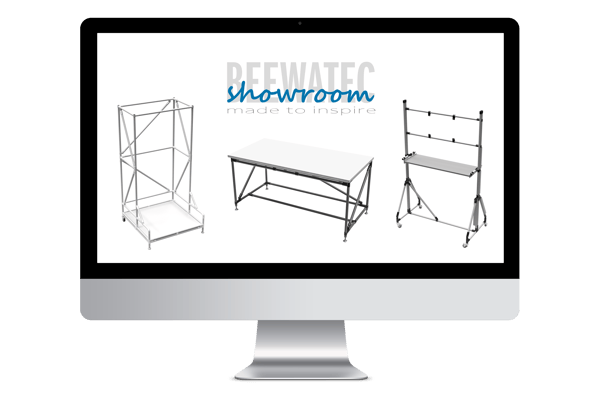Efficient order picking is one of the key processes in warehouse management and logistics that directly affects the speed and accuracy of delivery to the customer. As companies face increasing demands for speed, accuracy and efficiency, optimizing picking becomes inevitable. In this article, we'll explore what order picking means, outline the different methods and types of picking, including both manual and automated approaches, and show how to apply lean management principles to eliminate waste and increase productivity.
Definition of Order Picking and Why It Is Crucial for Efficient Logistics
Order picking is one of the most important processes in warehouse management and logistics, directly affecting the speed and accuracy of deliveries to customers. It is the step where the required products are picked from the warehouse and prepared for dispatch. This process can have a major impact on the overall efficiency of the logistics chain as it determines how quickly and correctly orders are processed and shipped.
Proper order picking can significantly improve a company's operational efficiency. An efficient picking system helps to optimize costs, minimize unnecessary movements, and reduce the time employees spend picking products from the warehouse. This reduces the overall time it takes to deliver an order to a customer, while also reducing error rates. Every error that needs to be corrected means unnecessary cost and time, so picking accuracy is key to maintaining high levels of customer satisfaction.
Applying Lean principles, which focus on eliminating waste, increasing quality and improving overall productivity, is extremely important in the picking process. Lean management helps warehouses not only minimize unnecessary steps, but also tailor the picking process to the needs of employees and customers. Improving this process brings significant savings in time and money, which is important for both companies with high order volumes and those that prioritize fast and reliable delivery.
![]()
Types of Order Picking
The type of order picking fundamentally affects the speed and efficiency of the logistics process. Depending on the needs of the warehouse, order picking can be done manually, in a fully automated manner, or as a combination of both approaches.
Manual Picking
Manual picking is the most basic form of picking, where employees pick goods manually according to individual orders. This approach is common in smaller-sized warehouses or where there is a low volume of orders. The advantage of manual picking is its simplicity; it does not require complex systems or a high investment in technology. Employees can react quickly to changes or non-standard requirements. On the other hand, this approach has its drawbacks. Due to the dependence on the human factor, manual picking is often slower, the risk of error is higher and the whole process can be time-consuming and physically demanding. As a result, manual picking can lead to downtime and unnecessary costs.
_web.jpg?width=800&height=533&name=Beewatec042018-(16)_web.jpg)
Automated Picking
Automated picking uses advanced technology to take over the role of employees and speed up the picking process. The most common automated methods include robotic systems, pick to light systems and voice picking. Robotic systems can quickly and accurately handle goods without the need for human intervention, significantly reducing error rates and increasing the speed of picking individual orders. The pick to light system guides pickers by light signals to the exact location of the desired goods, reducing picking time and improving accuracy. Voice picking allows pickers to receive instructions using headphones, keeping their hands free and increasing the smoothness of the process. While automation significantly improves efficiency and accuracy, its implementation requires a high initial investment and is particularly suitable for large warehouses with a constant volume of orders.
Hybrid Approach - Semi-Automated Picking
Hybrid order picking combines manual and automated approaches to take advantage of both methods. This approach is suitable for warehouses where flexibility requirements are higher and where both standardized and non-standardized orders need to be managed. In a hybrid system, for example, employees can pick goods in combination with a pick to light system or use robots only in certain parts of the warehouse. Such a system allows the process to be streamlined, while allowing employees to still handle specific requests or less common items manually. The hybrid approach represents a compromise that reduces the cost of automation while increasing the speed and accuracy of the process compared to purely manual picking.
Order Picking Methods
The efficiency of the picking process depends not only on the type but also on the methods used to organize and optimize the work in the warehouse. Different methods are suitable for different types of warehouses and order volumes, the aim always being to minimize time and improve accuracy. Below is an overview of the basic picking methods that can be used, including combined approaches for more complex warehouse operations.

Single Order Picking
Single order picking is a basic method in which the warehouse picker picks one order at a time. This approach is easy to implement because it does not require special planning or technological equipment. The advantage is simplicity and ease of control over each order, but the disadvantage can be time consuming - employees often walk unnecessary distance, especially when products are spread throughout the warehouse.
Batch Picking
In batch picking, the warehouse picker picks several orders at the same time, usually grouped by product. A single "batch" can contain items that are frequently repeated, saving time by preventing employees from constantly moving between different parts of the warehouse. This method is effective when the warehouse has a high volume of orders with similar items but can be challenging to organize as it requires precise planning.
Zone Picking
Zone picking involves dividing the warehouse into smaller sections (zones), with each employee or machine responsible for picking products from only one specific zone. This approach minimizes the movement of employees and is effective in large warehouses where it is essential that employees stay in a designated area and pick products only from that area. The disadvantage is that orders must be stacked at the end, which can mean longer picking completion times.
Wave Picking
The wave picking method consists of organizing work into "waves" - work is scheduled according to time blocks or specific deadlines, often aligned with scheduled shipments or shipping dates. Employees or automated systems pick products in waves, allowing for more efficient and coordinated picking for large order volumes. Wave picking improves planning and allows warehouses to respond flexibly to different logistical requirements.
Cluster Picking
Cluster picking allows workers to pick items for multiple orders at once by gathering them into "clusters". For example, a picker may have a trolley with bins for different orders, which shortens the journey and minimizes the amount of movement. This method is particularly suited to warehouses with large quantities of orders with fewer items per order.
Combined Methods
For some warehouse operations, the use of combined methods is proving useful, allowing picking to be tailored to the specific needs of the warehouse:
- Zone-Batch Picking: Orders are picked within each zone and then grouped into batches. This approach streamlines picking for high volume orders.
- Zone-Wave Picking: This method combines zone and wave picking, with each zone picking products in waves according to a planned schedule. It is suitable for warehouses where many orders need to be processed in short time intervals.
- Zone-Batch-Wave Picking: The most comprehensive method that combines three approaches. Orders are picked in individual zones, in batches and in waves at the same time. This approach is ideal for large warehouses with very high order volumes that require precise coordination and efficient management.
Combined picking methods bring flexibility and allow maximum efficiency even in more demanding warehouse operations where high order volumes, time requirements and warehouse space layouts need to be considered.

DOWNLOAD NOW!
Order Picking Self-Assesment Questionnaire
By completing this questionnaire, you can better assess the strengths and weaknesses of your picking process and possibly identify areas for further improvement.
Download for freeOrder Picking Self-Assesment Questionnaire
After you have filled out and sent the form, you will receive the questionnaire immediately by e-mail.
How to Improve Order Picking Process with a Lean Approach
Implementing Lean principles can significantly streamline the order picking process and deliver better warehouse management results. The Lean approach focuses on minimizing waste, increasing accuracy and optimizing workflow processes. In the following sections, we will look at the key steps on how Lean management can be applied in the warehouse to achieve better productivity and lower costs.
- Eliminating Waste (7 Types of Waste in Picking): In Lean management, there are seven types of waste (Muda) that can also occur in the picking process. The most common types of waste include unnecessary movements (employees spending too much time moving through the warehouse), overproduction (over-picked products), and picking errors that lead to additional repair costs. Other forms of waste include unnecessary waiting for order processing, excess inventory, insufficient labor utilization, and unnecessary steps in the process. Identifying and then eliminating these types of waste can help increase productivity and reduce costs.
- Standardization of Process: Standardization is important to increase efficiency and accuracy. The introduction of clear workflows such as visual tools (e.g. color-coded shelving), picking checklists and standardized work surfaces can greatly facilitate the work of employees. Ergonomically adapted workstations, such as correctly positioned shelving or accessible trolleys, also contribute to faster and more convenient picking. Standardized procedures help to minimize errors and ensure a consistent quality of work across shifts.
- Optimization of Warehouse Space: A proper warehouse layout is key to minimizing the time spent moving between racks. Methods such as ABC analysis, which classifies products according to their turnover rate, allow you to place the most frequently picked items in easily accessible locations. Optimizing stock zones, i.e. creating specific areas for different product categories, can further speed up picking. A good warehouse layout not only reduces picking time, but also improves ergonomics and visibility, which is essential for maintaining high productivity.
- Using Technology for Better Accuracy: Modern technology is a great tool to make picking more efficient and reduce errors. Barcode scanners allow pickers to quickly and accurately identify products and minimize picking errors. Other useful technologies include pick to light systems, which use light signals to guide workers to the exact picking location, and voice picking, where workers receive instructions through headphones, allowing them to keep their hands free. These technologies speed up the process, reduce errors and contribute to increased customer satisfaction through more accurate deliveries.

How Can We Help: Modular System for Better Order Picking
BeeWaTec's modular system offers unique flexibility and adaptability to improve your order picking process. These solutions provide the ability to tailor work areas and storage elements to specific needs, promoting a more efficient and ergonomic work environment.
-
Flexibility and Quick Adaptation: BeeWaTec's modular system allows you to create customizable workstations, transport trolleys and storage racks that can be adapted to changing requirements. This makes it easy to respond to warehouse growth or process changes.
-
Personalization for Employee Ergonomics: With the ability to customize work surfaces and tools directly, this system can significantly improve ergonomics, leading to reduced fatigue, faster work and less redundant movements.
-
Promote Organization and Improve Productivity: BeeWaTec's modular system promotes better space organization and a more logical warehouse layout, making picking more efficient and minimizing excessive movements - essential for increased productivity.
Conclusion
Efficient order picking is a crucial step towards optimizing warehouse processes and improving logistics. Thanks to modern methods and technologies, a well-configured picking process can contribute to significant cost reduction, shorter delivery times and minimized errors. Implementing Lean principles, adapting ergonomic workstations and using modular solutions such as the pipe racking system from BeeWaTec can significantly increase productivity.
If you are looking for inspiration for optimizing your own warehouse, we encourage you to visit our online showroom where you will find practical examples of our solutions for real customers. Browse a wide range of workstations, transport trolleys and customized warehouse racks that can make a significant contribution to the efficiency of your operation.
Optimize Your Order Picking Process With Flexible Solutions!
With our modular system you can implement any solution you need. Discover your possibilities, existing solutions or build your own material flow system with BEEVisio in 3D.




_Web_01_01.jpg?width=1240&name=Beewatec-3-(37)_Web_01_01.jpg)


